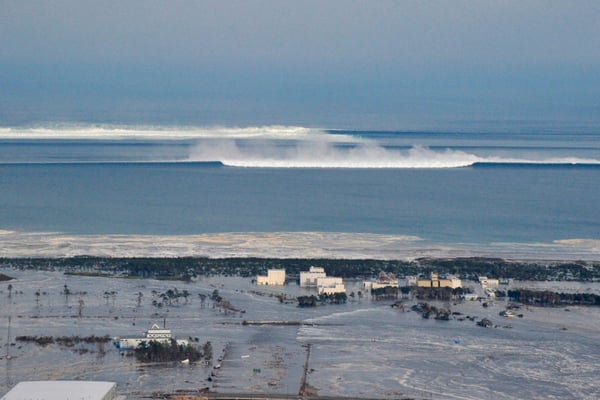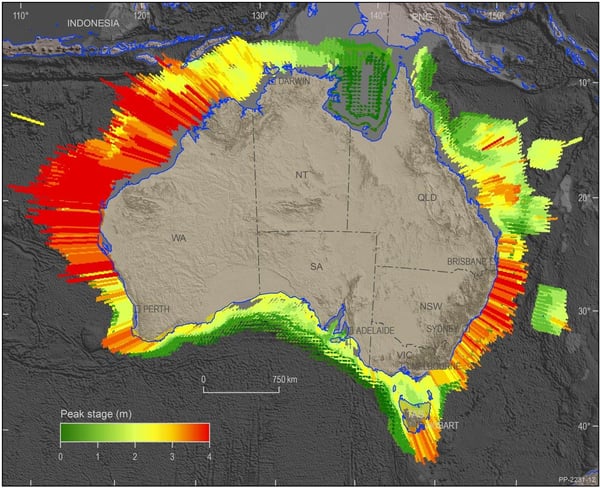November 5 is World Tsunami Awareness Day. Beginning in 2015, the day is designed to educate the public about the dangers of Tsunamis and is a reminder to familiarise yourself with evacuation plans if needed. The 2023 theme, "Fighting inequality for a resilient future," serves as a poignant reminder that tsunamis, while indiscriminate in their immediate impact, disproportionately affect marginalised groups in their aftermath.

In an ideal world, every individual, regardless of socio-economic status, would have equal access to resources, shelter, and safety. Yet, the reality paints a starkly different picture. Those living under the poverty line, women, children & the disabled are often disproportionally affected by natural disasters. Whether it’s a lack of robust housing, limited access to early warning systems, or an absence of safety nets, these groups face heightened risks. Their recovery, too and path to rebuilding is generally longer and more arduous.
 The 10-metre tsunami strikes the coast of Natori City following the magnitude 9 earthquake (Image source: The Guardian)
The 10-metre tsunami strikes the coast of Natori City following the magnitude 9 earthquake (Image source: The Guardian)
While Australia might seem a world away from the devastating tsunamis that have historically hit parts of Asia and the Pacific, the lessons of inequality resonate just as deeply. It's vital to recognise how women, children, the disabled, and those in poverty might bear an unequal burden during natural disasters.
- Women, often the primary caregivers, face the dual pressure of ensuring their safety while navigating challenges for their dependents.
- Children, due to their age and understanding, may lack the immediate instincts to react swiftly to impending threats.
- Disabled individuals confront unique physical and communication barriers, potentially making evacuation and accessing information more challenging.
- Those in poverty or from non-English speaking backgrounds can be hindered by limited resources, linguistic barriers, or cultural norms that may not align with conventional safety protocols.
These vulnerabilities underscore the need for Australia, with its vast and diverse population, to implement disaster response plans that are inclusive and aid everyone in the community.
Tsunami Impact Zones in Australia
Australia's extensive coastline makes certain regions more susceptible to potential tsunamis. Island communities, and those along coastlines and estuaries are particularly more at risk, with businesses along the coast around riverine estuaries most at risk to damage from tsunami.
- Western Australia: Cities like Perth, Broome, and Geraldton along the Indian Ocean could face risks from undersea quakes near Indonesia.
- Northern Australia: Regions around Darwin and the Gulf of Carpentaria might be vulnerable due to seismic activities to the north.
- Eastern Australia: Coastal areas in Queensland, New South Wales, and Tasmania's eastern coastline may be affected by tsunamis stemming from the Pacific "Ring of Fire".
- South Australia: Although less frequent, parts of South Australia's coastline could still be impacted by significant seismic events in the Indian Ocean.
The Probabilistic Tsunami Hazard Assessment (PTHA), created by Geoscience Australia, provides a nationally consistent analysis of the size and frequency of earthquake-tsunamis offshore from Australia.
These outputs can be used to create tsunami scenarios for local-scale inundation hazard studies all around Australia, while retaining substantial national consistency among the results. The image below from PTHA indicates parts of the country are most likely to be hit and includes data for more than 500,000 possible earthquake and tsunami scenarios in Australia.

Probabilistic Tsunami Hazard Assessment map provided by Geoscience Australia
Though the likelihood of a large tsunami affecting Australia is low, the potential impact is significant. Communities, especially in the above-mentioned areas, should be aware of evacuation routes and have a plan in place. Early warning systems and community awareness programs are vital for minimising the potential devastation of such natural events.
States and Territories have Tsunami plans and procedures which can be found via the links below.
Northern Territory - Secure NT
Queensland - Get Ready Queensland
New South Wales - SES Know Your Risk
Victoria - Victoria SES
Tasmania - Tasmania SES
South Australia - Bureau of Meteorology
Western Australia - Department of Fire & Emergency Services
In conjunction with the state and territory tsunami procedures in place, this year's World Tsunami Awareness Day theme urges us to keep in mind those who are most vulnerable in our society. As we prepare for the potential impact of tsunamis in various regions of Australia, it is essential that our disaster response strategies prioritise the safety and well-being of disadvantaged groups. Inclusivity and equity should be at the forefront of our disaster preparedness efforts, ensuring that no one is left behind.